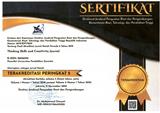Perbedaan Struktur Otak dan Perilaku Belajar Antara Pria dan Wanita; Eksplanasi dalam Sudut Pandang Neuro Sains dan Filsafat
DOI:
https://doi.org/10.23887/jfi.v1i1.13973Abstract
Human beings as agents of change and well-being on Earth was created by God in two types of different biological potential. The potential is equipped to carry out their mandate. This potential will be optimized through the correct process in accordance with the characteristics of each type of sexual potency. This qualitative studies, research library, is aimed to providing an explanatory link between gender, brain structure, and learning behavior. Brain structures of men and women have differences in the anatomical aspects, physical (size), and a way of thinking, including learning. Teach boys more appropriate to use a pattern that puts the visuospatial, challenging, and rich in hands-on activities. While teach women would be more effective to use a pattern that emphasizes language and communication abilities such as reading, writing, lectures, casual discussions, collaboration, and presentation. In education, differences in the way and learning styles of men and women can be facilitated with several options for how such multiple female teachers at the level of primary education, the separation of classes between men and women, applying combinative methods of teaching in heterogeneous classReferences
Dekaban, A.S. & Sadowsky, D. (1978). Changes in Brain Weights During The Span of Human Life: Relation of Brain Weight to Body Heights and Body Weights. Journal of Neurology, Vol. 4: 345-356.
Erniati. 2015. Pembelajaran Neurosains Dalam Pembentukan Karakter Peserta Didik Pada Pondok Pesantren. Hunafa: Jurnal Studia Islamika Vol. 12, No. 1, Juni hal 43-69.
Hewitt, Paul & Lyons, Suzanne & Suchocki, John & Yeh, Jennifer. (2007). Conceptual Integrated Science. San Fransisco: Pearson Education Inc.
Pasiak, Taufik. (2004). Revolusi IQ/EQ/SQ: Antara Neurosains dan al-Qur’an. Bandung: Mizan Pustaka
Rakhmat, Jalaluddin. 2005. Belajar Cerdas Belajar Berbasiskan Otak. Bandung: MLC
Rohkamm, Reinhard. (2004). Color Atlas of Neurology. Stuttgart: Georg Thieme Verlag
Silberman, I. 2005. Religion as a meaning system: Implications for the new millennium. Journal of Social Issues Vol. 2 No . 4.
Suyadi, 2012. “Model Pendidikan Karakter dalam Konteks Neurosains”, Proceeding Seminar Nasional, Yogyakarta: Prodi PGMI Fakultas Tarbiyah UIN Sunan Kalijaga.
Tafsir, Ahmad. 2006. Filsafat Pendidikan Islami, Integrasi Jasmani, Rohani dan Kalbu, Memanusiakan Manusia. Bandung: Remaja Rosda Karya,
Wathon, Aminul. 2016. Neurosains Dalam Pendidikan. Jurnal Lentera: Kajian Keagamaan, Keilmuan dan Teknologi Volume 14, Nomor 1.
Downloads
Published
Issue
Section
License

Jurnal Filsafat Indonesia Undiksha is licensed under a Creative Commons Attribution-ShareAlike 4.0 International License.



